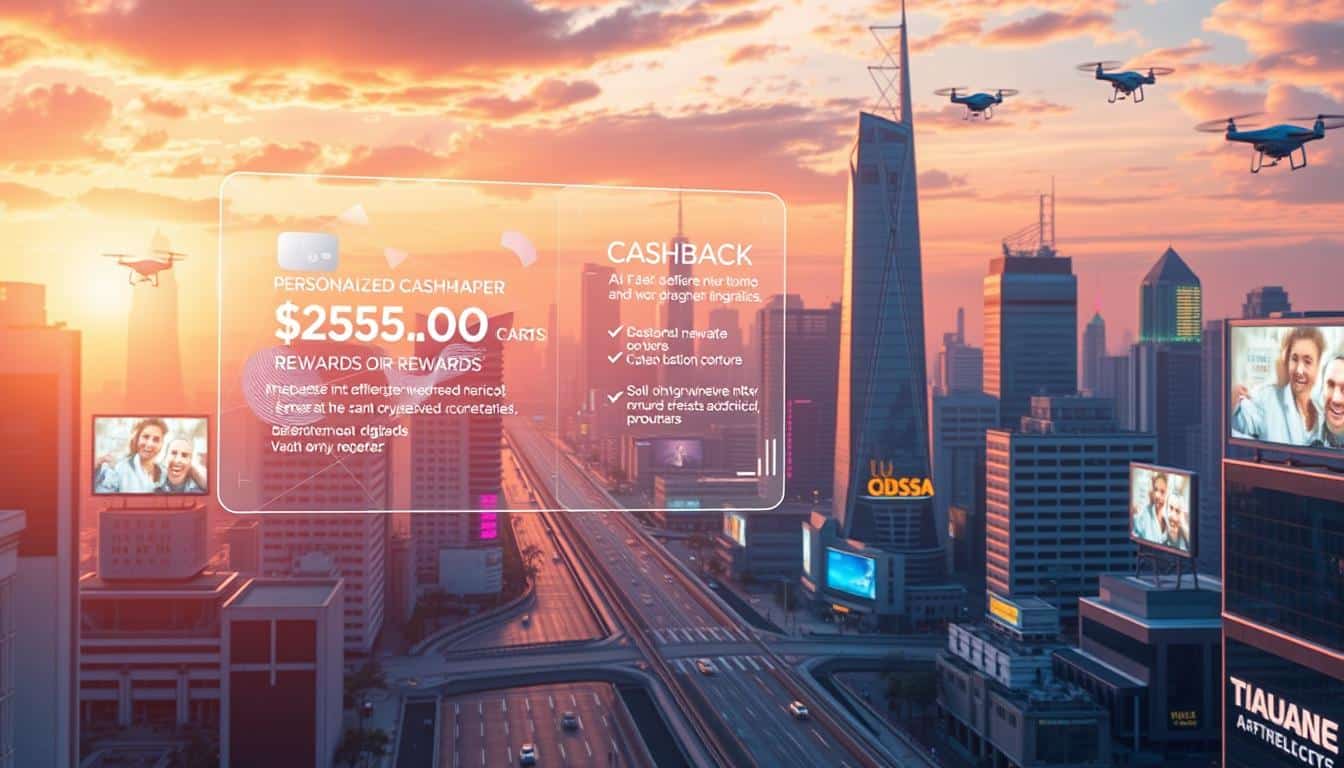Do you want a card for every moment?
Guyana is becoming one of the world’s fastest-growing economies. This growth is mainly due to its vast natural resources. The oil and gas sector, which started production in 2019, plays a big part.
Since then, Guyana’s economy has seen significant growth. Experts expect double-digit GDP increases in 2023 and 2024. The oil industry is changing Guyana’s economic scene in major ways.

GBTI Visa Gold Card
Introduction to Guyana’s Economic Landscape
Guyana is closely tied to the Caribbean community, despite being in South America. This link helps with trade and cultural exchanges. It also opens doors for more investment in the area.
The country is known for its natural resources. A big find in offshore oil has really changed its economy. Now, Guyana is one of the quickest growing countries in the region. Its economy is booming, showing the world its growing importance.

Understanding Guyana’s rich culture and resources is key as its economy grows. The country is ready to use its position for greater success. It aims to work with the Caribbean and others for a bright future.
Overview of Guyana’s Natural Resources
Guyana is rich in natural resources, which boost its economy. The country aims to use these resources wisely for growth. These include valuable oils that attract investors and help build infrastructure.
Oil and Gas Reserves
Guyana’s oil reserves are huge, over 11.2 billion barrels. It also has around 17 trillion cubic feet of gas. This wealth has sparked great interest from other countries. Efforts to drill more are boosting the country’s wealth.
Agricultural Resources
Farmland is key to Guyana’s economy, offering jobs and exports. Its fertile land is great for growing many crops. This makes Guyana important for the region’s food.
Mineral Wealth
Guyana isn’t just about oil and farming; it has gold and bauxite too. Mining boosts the economy, creates jobs, and supports local companies. Handling these resources well is vital for the country’s future.
Current State of Guyana’s Oil Sector
Guyana’s oil sector has turned the country into a leading economic force in the Caribbean. Oil production has jumped to 650,000 barrels a day. This surge boosts the economy significantly, making oil a key topic in GDP growth discussions.
Production Rates and Impact on GDP
In 2022, oil was 88% of Guyana’s total exports. This huge increase in production led to a 63.4% GDP growth. It shows oil’s critical role in Guyana’s economy by creating jobs and supporting social programs.
Future Projections for Oil Output
Oil production in Guyana is expected to keep growing. Technological progress and more investment in exploration will push production higher. This will likely increase the oil sector’s effect on GDP, shaping Guyana’s economic future even more.
Guyana’s Booming GDP Growth
Guyana has recently caught the world’s eye with its booming economy. It grew by a stunning 38.2% in 2022. This growth is a big change from the past, where the economy often didn’t grow much or even shrank.
The big reason for this growth is the oil and gas sector. It’s starting a new era for Guyana, making big changes to the country’s economy.
Yearly GDP Growth Rates
Experts think Guyana’s economy will grow by about 14% in 2023. This shows that the country is on an exciting path. Its growth shows how Guyana’s economy is changing in big ways.
Comparative Analysis with South America
Compared to other South American countries, Guyana really stands out. Its GDP growth is the highest in the region. This shows the power of using natural resources for fast development.
While other countries face slow growth, Guyana’s success offers important lessons. It shows effective ways to grow an economy.
Factors Driving Economic Diversification
Guyana’s economy is changing rapidly, mainly because it needs to diversify. The oil industry has brought growth. But, the country’s reliance on oil is dangerous. It makes the economy weak against global price changes. It’s crucial to grow other sectors besides oil.
Challenges of Over-reliance on Oil
Depending too much on oil puts Guyana at risk. Oil price changes can make funding for government projects and social programs unstable. The country faces problems like:
- Being more exposed to sudden economic problems.
- Overlooking chances to explore different economic paths.
- Ignoring important non-oil sectors that are needed for lasting growth.
Guyana must come up with a strong plan for diversification. This plan should push for innovation and investments in a range of industries.
Investment in Infrastructure and Non-Oil Sectors
To deal with the dangers of oil reliance, Guyana needs significant investments in infrastructure. Such investments will support non-oil areas like farming, tourism, and manufacturing. Important efforts should focus on:
- Improving trade by developing better transportation.
- Creating educational places to develop a skilled workforce.
- Encouraging technology and innovation centers to draw in investments.
By focusing on these investments, Guyana can make its economy diverse. This reduces its vulnerability and leads to a stronger, more secure future.
Social Impacts of Economic Growth
Economic growth in Guyana has had a big effect on social progress nationwide. A key change has been in poverty trends, with poverty levels dropping over time. As the economy grew, ways to reduce poverty and better living conditions have evolved too.
Poverty Reduction Trends
Between 2006 and 2019, the number of people in poverty went from 60.9% to 48.4%. This big decrease shows that the strategies to fight poverty, alongside economic growth, are working. But it’s still important to keep studying poverty, especially with recent changes.
Access to Education and Healthcare
Economic growth hasn’t just made people wealthier. It’s also made it easier to get to important services like education and healthcare. Putting money into these areas has helped make the population healthier and more educated. This supports the continuing improvements in society.
Challenges Facing Guyana’s Economy
Guyana’s economy is growing, but big problems like poverty and exclusion exist. Many people, especially in far places, can’t easily get to important services and chances. To move forward, Guyana needs to focus on making sure everyone benefits from its growth.
High Poverty Levels and Social Exclusion
Poverty is a big obstacle for Guyana’s sustainable growth. Even with some sectors improving, not everyone is benefiting equally. This leads to many people feeling left out. To tackle poverty, Guyana must improve education, healthcare, and jobs for those in need.
Environmental Risks and Climate Change
Guyana is facing threats from climate change, like more floods, cutting down forests, and losing wildlife. These issues hurt important areas like farming and fishing. It’s important to find a balance between growing the economy and protecting nature. Making policies that look after the environment is crucial.
Guyana’s Political Landscape and Economic Policy
Guyana’s politics greatly influence its economy. President Irfaan Ali’s leadership aims to better citizen lives with new plans. These plans include a lot of government spending on programs. They’re designed to boost living standards.
Government Spending and Social Programs
The government is really focusing on spending for social good. This includes education help and money for those in need. Through these efforts, they try to lessen poverty and inequality. However, people are asking if these actions really bring the hoped-for changes.
- Increased funding for education to elevate literacy rates.
- Cash transfer programs targeting low-income families.
- Investments in healthcare to improve access and quality of services.
Political choices are shaping Guyana’s economic future. There’s an ongoing debate on if this spending is sustainable. The government faces the tough task of balancing accountability and priorities.
Local and Foreign Investments in Guyana
Guyana buzzes with both local and international investors. Its booming economy draws huge foreign investments. This interest is due to its improving investment climate and growth prospects.
Diverse sectors offer big potential for growth. This attracts attention from around the world.
Role of Foreign Direct Investment (FDI)
Foreign direct investment is key to Guyana’s economy. For 2023, FDI might hit $7.2 billion, largely thanks to oil. This foreign cash boost helps grow the economy, create more jobs, and build infrastructure.
Investment in Renewable Energy and Infrastructure
Renewable energy investments are gaining speed in Guyana. The government supports clean energy projects. Both Guyanese and overseas investors are jumping in. They’re looking at:
- Solar energy to cut down on fossil fuels
- Wind energy farms that use natural resources
- Building modern infrastructure for economic expansion
These efforts aim to power Guyana’s growth sustainably. A blend of local and international funds is crucial. It will help kickstart these green projects.
Security Risks and Regional Tensions
Guyana’s political scene is getting more complex, mainly because of territory issues with Venezuela. The region of Essequibo is a significant concern, posing security risks for Guyana’s stability. These problems could affect not just Guyana but neighboring areas too.
Disputes Over Territorial Claims
The fight over Essequibo with Venezuela has been going on for a long time. It adds uncertainty to life in Guyana. The dispute brings many security problems. It impacts military planning and peace talks. The fear of increased tension scares off investors who prefer stable environments.
- The geopolitical implications of the Venezuela dispute necessitate careful diplomatic engagement.
- Regional security efforts may need to be reinforced to address these territorial challenges.
- A proactive approach is essential to mitigate risks that arise from escalated claims on territory.
To wrap up, territorial disputes heavily influence Guyana’s safety and economic growth plans. These security concerns do more than threaten land ownership. They affect how safe and attractive Guyana appears for investment.
Guyana’s Ongoing Economic Reforms
Guyana is working hard on its economic changes to grow sustainably and be more climate-resilient. The government knows it must tackle environmental and economic challenges together. Their goal is to boost economic health and protect the planet at the same time.
Investment in Climate Resilience
Putting money into climate resilience is key to Guyana’s reform plans. They’re committed to the Low Carbon Development Strategy, focusing on clean energy. This effort aims to keep their natural treasures safe while promoting eco-friendly economic growth. It’s about defending against climate change to ensure a better future for all.
Future Economic Policies and Strategies
Looking ahead, Guyana plans to weave climate solutions into its growth plans. They are exploring ways to lessen dependency on old-school industries by diversifying. Innovations and green tech investments are crucial for a climate-tough economy. Guyana wants to lead the way in eco-smart development in its area.
Conclusion
Guyana is at a key point in its growth, with big economic possibilities ahead. The oil and gas sector is driving this change, bringing a lot of money and chances for investment. But, there are challenges too. These include making sure everyone benefits and taking care of the environment.
Looking at Guyana’s economic future, it’s clear we need to think carefully about these challenges. The government and other groups must work on having different kinds of businesses and building better infrastructure. Doing this will help make sure the growth helps everyone in Guyana. This way, the country can be stable and do well globally.
So, Guyana’s journey forward is about more than just using its resources. It’s about building an economy that’s fair and lasts long. By planning together, Guyana can be a success story in South America. It can show how to grow in a way that’s good for everyone.
FAQ
What are the main drivers of Guyana’s economic growth?
How has oil production impacted Guyana’s economy?
What are the potential risks of relying on the oil sector?
What initiatives are in place to reduce poverty in Guyana?
How does foreign direct investment (FDI) influence Guyana?
What challenges does Guyana face regarding social inclusion?
What measures is Guyana taking for environmental sustainability?
What are the geopolitical challenges facing Guyana?
How is Guyana’s government responding to economic challenges?
Conteúdo criado com auxílio de Inteligência Artificial



